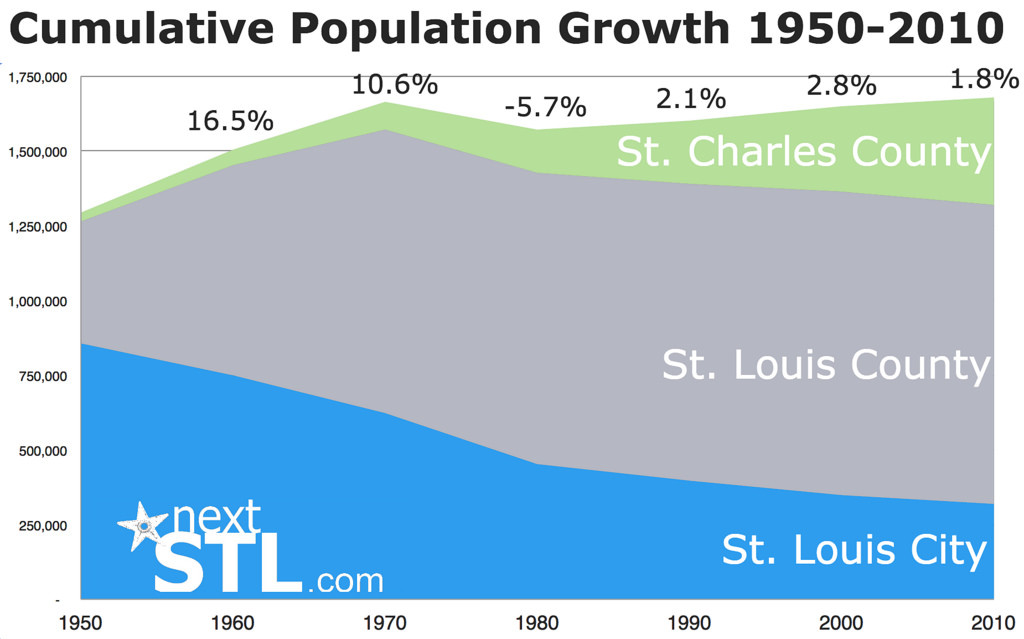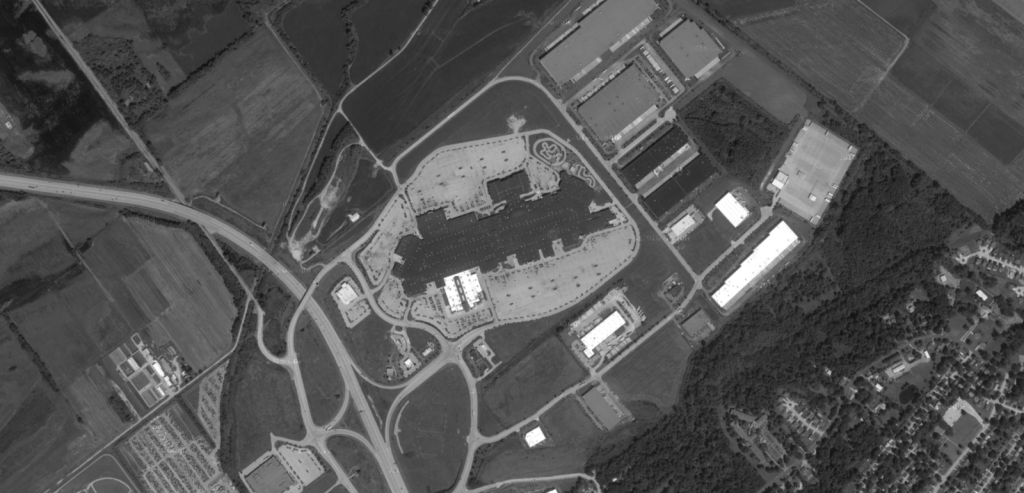This is one case where even a ridiculous headline can’t possibly describe the ridiculousness of the situation. The St. Louis Outlet Mall, nee St. Louis Mills Mall, has sold for $4.4M. The mall was completed in 2003 at a cost of $250M. It sits next to Missouri Route 370, a freeway connecting St. Louis County and St. Charles County across the Missouri River. MO-370 was completed in 1996 at a cost of $250M.
The construction of 370 and the Discovery Bridge has been called “one of the more successful infrastructure projects ever undertaken in St. Charles County” (for St. Charles County). The St. Louis region’s newspaper of record concluded “The Highway 370 corridor has served every purpose for which it was created and then some.” In addition to the benefit of just more driving, the construction of the St. Louis Mills Mall, on 370 just north of I-70, has been cited as the highway project’s single largest economic development benefit.
When 370 was envisioned, traffic on I-70 had reached 100,000 vehicles a day. St. Charles County, the west of the Missouri River, was hungry for economic development. Once the political process got the “economic development” bit between its teeth, 370 became a rather simple engineering problem. The highway was expected to take 40,000 cars a day off parallel I-70 and the Blanchette Bridge over the Missouri River. By 2013, the most recent year for which traffic counts are available, 370 carried 55,000 vehicles each day. That same year, 155,000 vehicles a day traveled I-70 in the area. The count in 2000 was 178,000 on I-70 and 51,000 on 370.
Did 370 “take 40,000 cars a day” off I-70. No way. Such measurements ignore induced demand, which is very clearly what happened in St. Charles County. Assuming I-70 traffic would have hit 200,000 if not for 370 is silly. What additional access has done is allow for abandonment and sprawl. If you can make a 30min commute 20min, people will chose to live 10min further away.
Then there’s the Page Avenue extension, a project similar to 370, but south of I-70. In 2013, it carried 61,000 vehicles a day across the Missouri River. The three crossings now carry 271,000 cars a day across the Missouri River. This has been an economic development boom, in St. Charles County. St. Louis County, on the other hand, lost residential population for the first time in its history this past decade, and has failed to increase jobs or retail development.
The City of St. Louis, St. Louis County, and St. Charles County cumulatively gained 1% in total population since 1970. Missouri has simply subsidized the movement of people away from existing investments, leaving behind economic liabilities while creating new unsustainable liabilities at the same time. That state prioritizing sprawl with its limited budget and finite federal money is an economic development failure, a pyramid scheme for which the bill is coming due.
But back to the mall. The dead mall is almost a cliche these days (The Life and Death of Great St. Louis Malls). Since the Outlet Mall opened, both existing malls within nearest proximity have closed. The 142-acre Jamestown Mall opened in 1973, closing in 2014. Last year St. Louis County purchased the vacant 126,000 sf JCPenney store at the mall, along with 600 parking spaces on 8.6 acres in order to have a say in its future development. There are currently no development plans.
Nearer the Outlet Mall, 122-acre, 1.8M sf Northwest Plaza closed in 2010, eventually selling for $5M. It was the 27th largest mall in the United States when it closed. A $106M redevelopment of that site is well underway, subsidized with more than $40M in tax credits and Tax Increment Financing (TIF). Northland and River Roads malls both closed in North St. Louis County as residents and jobs moved west.
So 370 (and the Page Avenue Extension) probably have “served every purpose for which it was created and then some.” That purpose was to enrich some and impoverish others using state and federal taxpayer money. It’s past time to reconsider why and where we continue to build.



